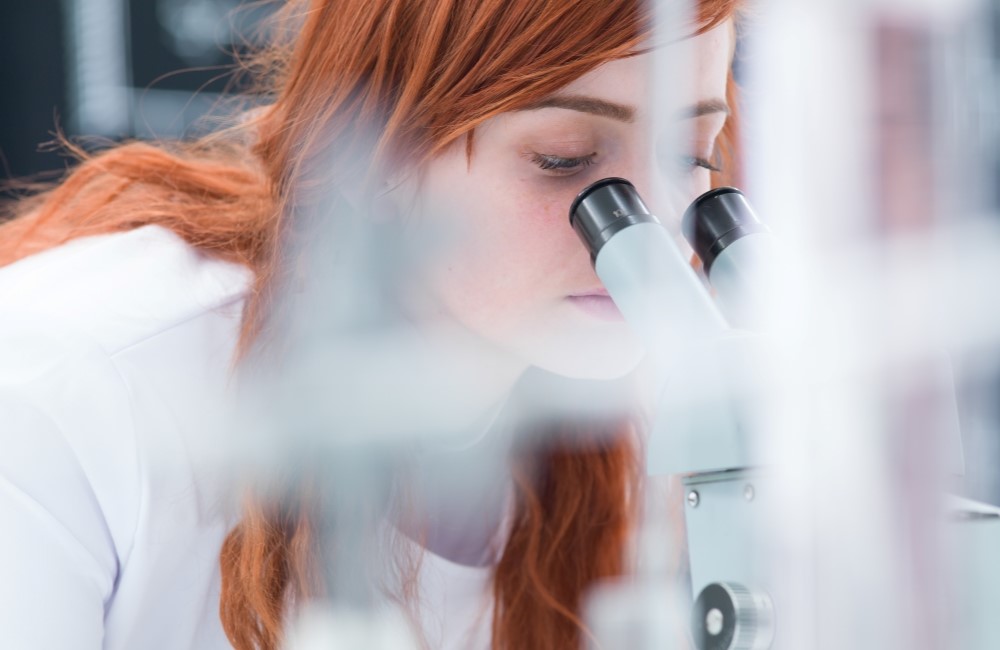What is
Actinic keratosis?
Actinic keratosis is a precursor of light skin cancer (squamous cell carcinoma or basal cell carcinoma). Actinic keratosis can be caused by long-term sun exposure and usually occurs in older people and is characterized by rough, scaly skin lesions that usually appear on sun-exposed areas of skin such as the face, scalp and forearms. Although actinic keratosis is benign in most cases, there is a small risk that it can develop into skin cancer. Early diagnosis and treatment are therefore important to avoid potential complications.
About the symptoms
More information
Important facts about actinic keratosis
Symptoms and consequences of actinic keratosis:
- Roughness and keratinization of the skin
- Scaly or crusty lesions
- Coarsely structured patches
- Spot color: brownish or reddish
- Redness or inflammation of the skin
- Itching or burning
- Larger lesions can be painful
- Possibly visible vascular changes (telangiectasia) in the skin
Where does actinic keratosis occur?
Actinic keratosis occurs mainly on sun-exposed areas of the body, including:
- Face (especially forehead, nose, cheeks)
- Scalp
- Neck and nape
- Forearms and back of hands
- Back of the hand
- Back
- Neckline
- Legs (especially in women)
Causes and risk factors of actinic keratosis
The main cause of actinic keratosis is long-term exposure to the sun. This means that the skin is damaged over time by repeated exposure to the sun. The ultraviolet (UV) rays of the sun in particular lead to changes in the skin cells, which can ultimately lead to the development of actinic keratoses. Therefore, people who are frequently and intensively exposed to the sun (or solarium) are at an increased risk of developing actinic keratosis.
Sun exposure
Sun exposure
Frequent or repeated intensive sun exposure
Excessive exposure to UV radiation,
Excessive exposure to UV radiation,
Excessive exposure to UV radiation, especially for people with fair skin
Age
Age
Age (more common in people over 60) and gender (more common in men)
Occupational exposure
Occupational exposure
Occupational exposure to UV rays (e.g. working outdoors)
Sunburns
Sunburns
Previous episodes of sunburn or use of sunbeds/artificial UV sources
How is actinic keratosis diagnosed?
Actinic keratosis is usually diagnosed by a clinical examination of the affected areas of skin. The doctor or dermatologist can assess the characteristic features of the lesions such as roughness, scaling, keratinization and possibly also redness. In some cases, a biopsy can be performed, where a small tissue sample is taken and examined under a microscope to confirm the diagnosis and, if necessary, rule out the presence of skin cancer.
Medical history at the dermatologist
Characteristic features of the lesions
Biopsy

What to do with actinic keratosis
When treating allergic rhinitis, it is initially important that those affected avoid the triggering allergens or at least reduce contact to a large extent. Your allergist will provide you with comprehensive information about your allergy.
Sun protection and skin cancer screening at the doctor's for actinic keratosis
Sun protection: Always wear a wide-brimmed hat, long-sleeved clothing and sunscreen with a high sun protection factor (SPF). Also avoid direct sunlight during the most intense hours of the day. It is also advisable to make an annual appointment with a dermatologist for a professional skin examination. A dermatologist is specially trained to recognize abnormal skin growth and suggest appropriate treatments. It is particularly important for people with actinic keratosis to be under the regular care of a dermatologist. This ensures appropriate treatment and monitoring of skin changes to maintain health and well-being.
Drug treatment of actinic keratosis
For mild to moderate skin damage caused by actinic keratosis, treatment with an ointment containing diclofenac and hyaluronic acid has proven to be effective. Under medical supervision, this cream is applied morning and evening for a period of 60 to 90 days. During treatment, it is important to avoid direct sunlight and UV radiation. The antirheumatic agent it contains inhibits the growth of tumor cells and has been shown to be effective in the early stages of actinic keratoses.
Surgical treatment of actinic keratosis
Surgical removal of actinic keratosis is a frequently used method, especially if skin cancer is suspected. There are two common procedures: Either the damaged area is cut out with a scalpel or scraped out with a curette, a surgical spoon. This procedure is considered if the actinic keratosis has already spread into deeper tissue layers and all of the altered tissue needs to be removed. A tissue sample is then sent to the laboratory for examination for malignancy. The side effects of superficial removal are minor and the wounds usually heal well.
Sources
Please note that all content provided regarding individual medical conditions, treatments, procedures, etc. is general information and may vary depending on the physician:in and individual case and initial situation.
For more detailed information, please always consult your doctor.
Oncology guideline program (German Cancer Society, German Cancer Aid, AWMF): S3 guideline actinic keratosis and squamous cell carcinoma of the skin, long version 1.0, 2019, AWMF register number: 032/022OL
LeitlinieAltmeyer, P: Actinic keratosis (February 15, 2021) | Retrieved July 12, 2023
www.altmeyers.orgAssociation of the Scientific Medical Societies in Germany: Actinic keratosis and squamous cell carcinoma of the skin | Retrieved July 12, 2023
www.awmf.orgUSZ Switzerland
www.usz.ch/